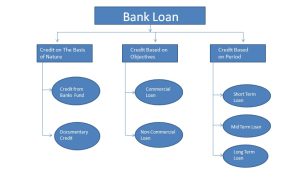Understanding the Basics of Loans

Loans are a fundamental aspect of personal and business finance, providing the means for individuals and organizations to access funds that might not be immediately available. Understanding loans is crucial for making informed financial decisions, whether you’re looking to finance a home, start a business, or manage existing debt. This article explores the basics of loans, including types, how they work, interest rates, and tips for managing them effectively.
What is a Loan?
A loan is a sum of money that one party borrows from another, typically a financial institution such as a bank, credit union, or online lender. The borrower agrees to repay the loan amount, usually with interest, over a specified period. Loans can be used for various purposes, including purchasing a home or car, funding education, consolidating debt, or covering unexpected expenses.
Types of Loans

Loans come in many forms, each designed to meet different financial needs. Here are some common types of loans:
1. Personal Loans
Personal loans are unsecured loans, meaning they don’t require collateral. They can be used for almost any purpose, such as consolidating debt, paying for medical expenses, or funding a major purchase. Interest rates on personal loans can vary widely based on the borrower’s credit score and financial history.
2. Mortgage Loans
Mortgage loans are secured loans used to purchase real estate. The property serves as collateral for the loan. Mortgages typically have lower interest rates compared to unsecured loans due to the reduced risk for the lender. Common types of mortgage loans include fixed-rate mortgages, adjustable-rate mortgages (ARMs), and government-backed loans like FHA and VA loans.
3. Auto Loans
Auto loans are secured loans used to finance the purchase of a vehicle. The vehicle serves as collateral, which means the lender can repossess it if the borrower defaults on the loan. Auto loans usually have fixed interest rates and terms ranging from three to seven years.
4. Student Loans
Student loans are designed to help students pay for education-related expenses, such as tuition, books, and living costs. They can be issued by the federal government or private lenders. Federal student loans typically offer more favorable terms, including lower interest rates and more flexible repayment options.
5. Business Loans
Business loans are used to finance business operations, expansions, or startup costs. They can be secured or unsecured and may come from banks, credit unions, or online lenders. Types of business loans include term loans, lines of credit, equipment financing, and SBA loans.
6. Payday Loans
Payday loans are short-term, high-interest loans designed to provide quick cash until the borrower’s next paycheck. Due to their high interest rates and fees, payday loans are often considered a last resort and can lead to a cycle of debt if not managed carefully.
How Loans Work
Understanding the mechanics of loans is essential for managing them effectively. Here’s a step-by-step overview of how loans work:
1. Application Process
The loan process begins with the borrower submitting an application to a lender. The application typically includes personal information, financial details, and the purpose of the loan. The lender will review this information to assess the borrower’s creditworthiness.
2. Approval and Terms
If the loan application is approved, the lender will present the borrower with the loan terms. These terms include the loan amount, interest rate, repayment schedule, and any fees. It’s crucial for borrowers to review and understand these terms before accepting the loan.
3. Disbursement of Funds
Once the borrower accepts the loan terms, the lender disburses the funds. For personal loans, the money is usually deposited directly into the borrower’s bank account. For mortgages or auto loans, the funds may be paid directly to the seller or service provider.
4. Repayment
Repayment terms vary depending on the type of loan. Most loans require monthly payments that include both principal and interest. The repayment period can range from a few months to several decades. It’s important for borrowers to make timely payments to avoid late fees and damage to their credit score.
5. Interest Rates and Fees
Interest is the cost of borrowing money, and it’s usually expressed as an annual percentage rate (APR). Loans can have fixed or variable interest rates. Fixed rates remain the same throughout the loan term, while variable rates can fluctuate based on market conditions. In addition to interest, loans may come with various fees, such as origination fees, late payment fees, and prepayment penalties.
Understanding Interest Rates
Interest rates play a crucial role in the cost of a loan. Here’s what you need to know about interest rates:
1. Fixed vs. Variable Rates
- Fixed Interest Rates: These rates remain constant throughout the life of the loan, providing predictable monthly payments. Fixed rates are common for mortgages, auto loans, and personal loans.
- Variable Interest Rates: Also known as adjustable rates, these can change over time based on market conditions. Variable rates can start lower than fixed rates but come with the risk of increasing in the future. ARMs and some personal loans have variable rates.
2. Annual Percentage Rate (APR)
The APR includes both the interest rate and any fees associated with the loan, providing a more comprehensive view of the loan’s cost. Comparing APRs can help borrowers choose the most affordable loan.
3. Factors Affecting Interest Rates
Several factors influence the interest rate a borrower may qualify for:
- Credit Score: Borrowers with higher credit scores typically receive lower interest rates, as they pose less risk to lenders.
- Loan Term: Shorter loan terms often come with lower interest rates, while longer terms may have higher rates.
- Economic Conditions: Interest rates can fluctuate based on economic factors, such as inflation and the Federal Reserve’s policies.
- Type of Loan: Secured loans, which have collateral, generally have lower interest rates than unsecured loans.
Managing Loans Effectively
Taking out a loan is a significant financial commitment. Here are some tips for managing loans effectively:
1. Understand Your Budget
Before taking out a loan, assess your budget to determine how much you can afford to borrow and repay. Consider your monthly income, expenses, and existing debts.
2. Shop Around for the Best Rates
Different lenders offer different terms and interest rates. Shopping around and comparing offers can help you find the best deal. Online comparison tools can simplify this process.
3. Read the Fine Print
Carefully read the loan agreement, including all terms and conditions. Pay attention to interest rates, fees, repayment terms, and any penalties for late or early payments.
4. Make Timely Payments
Consistently making on-time payments is crucial for maintaining a good credit score and avoiding additional fees. Set up automatic payments or reminders to help you stay on track.
5. Pay More Than the Minimum
If possible, pay more than the minimum monthly payment. This can reduce the principal balance faster and save you money on interest over the life of the loan.
6. Avoid Taking on Too Much Debt
Borrow only what you need and can afford to repay. Taking on too much debt can lead to financial strain and make it difficult to meet your obligations.
7. Monitor Your Credit Score
Your credit score affects your ability to get loans and the interest rates you’ll receive. Regularly check your credit report for accuracy and take steps to improve your score if necessary.
8. Communicate with Your Lender
If you’re having trouble making payments, contact your lender as soon as possible. They may offer solutions such as adjusting your payment schedule or providing temporary relief.
Common Pitfalls and How to Avoid Them
While loans can be beneficial, they also come with risks. Here are some common pitfalls and tips for avoiding them:
1. High-Interest Debt
High-interest loans, such as payday loans and some personal loans, can quickly become unmanageable. Avoid these types of loans if possible, and consider alternatives like borrowing from friends or family, or using a low-interest credit card.
2. Debt Consolidation Scams
Debt consolidation can be a useful tool for managing multiple debts, but be wary of scams. Research the company thoroughly and ensure they have a good reputation before agreeing to their services.
3. Hidden Fees
Some loans come with hidden fees that can significantly increase the cost of borrowing. Always read the loan agreement carefully and ask the lender to explain any fees you don’t understand.
4. Predatory Lending Practices
Predatory lenders target vulnerable borrowers with unfair and abusive terms. Be cautious of lenders who pressure you to take out a loan or who don’t disclose all the terms upfront.
5. Overborrowing
Taking out a larger loan than you need can lead to higher monthly payments and more interest paid over time. Only borrow what you need and can afford to repay.
Conclusion
Loans are a vital financial tool that can help individuals and businesses achieve their goals. Understanding the different types of loans, how they work, and the factors that affect their cost is essential for making informed decisions. By managing loans effectively and avoiding common pitfalls, borrowers can use loans to their advantage and maintain financial health.
Whether you’re considering a personal loan, mortgage, auto loan, or any other type of loan, taking the time to educate yourself and plan carefully can make a significant difference in your financial well-being. Remember to assess your needs, shop around for the best terms, and stay committed to responsible borrowing and repayment practices.

